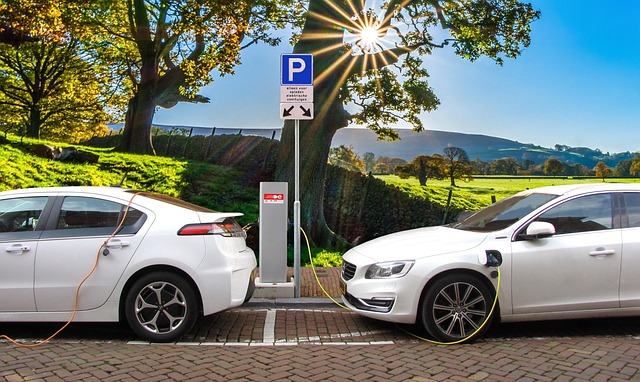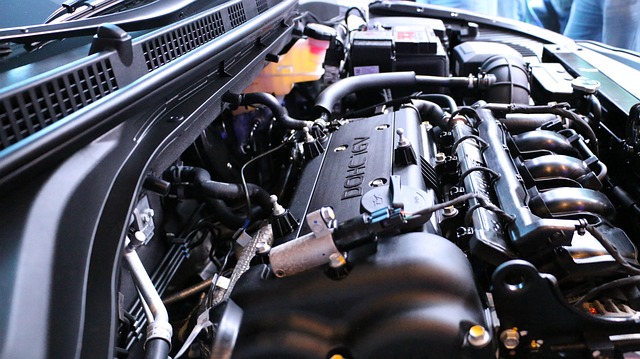Looking to register your car in California? This guide walks you through the entire process, ensuring a smooth experience. From understanding eligibility requirements for car registration to navigating the crucial dmv VIN verification step, we’ve got you covered. Gather essential documents, perform necessary inspections, and complete your registration application online or in-person. Finally, pay fees and receive your license plate, making your vehicle officially registered in the Golden State.
- Understand Eligibility Requirements for Car Registration
- Gather Necessary Documents for DMV VIN Verification
- Perform Vehicle Inspection and Title Transfer
- Complete Online or In-Person Registration Application
- Pay Registration Fees and Receive Your License Plate
Understand Eligibility Requirements for Car Registration

Before you begin the registration process, it’s crucial to understand the eligibility requirements for car registration in California. To register your vehicle, it must meet certain criteria set by the Department of Motor Vehicles (DMV). One key step is ensuring the car has passed a DMV vin verification, which involves a thorough inspection of the vehicle’s unique Vehicle Identification Number (VIN). This process confirms that your car meets safety and pollution standards required for roadworthiness.
Additionally, you’ll need to provide essential documentation, such as proof of ownership, valid insurance, and identification. If you’re opting for a mobile vin inspection or using a mobile vin verifier, ensure the service provider is approved by the DMV to avoid any potential issues during the registration.
Gather Necessary Documents for DMV VIN Verification

Before heading to the California DMV for registration, ensure you have all the required documents ready. One crucial piece is the Vehicle Identification Number (VIN) verification, which can be done through a mobile vin inspection or by using a mobile vin verifier. This process involves cross-referencing your car’s unique VIN with the manufacturer’s records to confirm its authenticity and specifications.
Gathering these documents is essential for a smooth registration process. Additionally, you’ll need proof of insurance, your driver’s license, and payment for the registration fee. With all these in hand, you’re well on your way to completing the DMV vin verification step efficiently.
Perform Vehicle Inspection and Title Transfer

Before registering your car in California, a vehicle inspection is mandatory. This involves a thorough checkup to ensure your car meets all safety and emissions standards set by the state. One crucial step is the DMV VIN verification process, where the unique Vehicle Identification Number (VIN) of your car is cross-checked against their records to confirm its authenticity and history. A mobile vin verifier or even a simple vin inspection can help streamline this process, ensuring your vehicle’s compliance before you make your trip to the DMV.
During the inspection, certified technicians will examine various components, including brakes, lights, tires, and emissions controls. Once your car passes the test, you’ll receive a certificate that proves its roadworthiness. This document is essential when transferring the title, which should be done at the California DMV. The title transfer process involves submitting the necessary paperwork, paying the registration fees, and providing proof of insurance. It’s recommended to complete these steps promptly after the inspection to avoid any delays in registering your vehicle legally on California roads.
Complete Online or In-Person Registration Application

In California, registering your car involves a straightforward process that can be completed online or in-person at a DMV office. The first step is to gather all necessary documents and information. This includes proof of ownership, such as a bill of sale or previous registration, identification documents like a driver’s license, and the Vehicle Identification Number (VIN) from your vehicle. Once you have these, you can start the registration application.
If you choose to complete the process online, the California DMV offers a convenient digital form that requires you to input your details and your car’s information. This includes the VIN verification, which is a crucial step ensuring your vehicle’s authenticity. Alternatively, visiting a local DMV allows for a more interactive experience with an agent who can guide you through the application. Regardless of your chosen method, ensure all information is accurate and up-to-date to avoid any delays in the registration process, especially when it comes to essential details like the VIN inspection.
Pay Registration Fees and Receive Your License Plate

After completing your vehicle’s registration application at the California DMV, it’s time to pay the registration fees. These fees vary based on the type of vehicle and its age. You can typically make the payment online or in-person at a DMV field office. Once your payment is processed, you’ll receive your license plate. This crucial step finalizes your vehicle’s legal status in California, allowing you to drive it on public roads.
Remember, proper documentation, including proof of insurance and a valid driver’s license, is essential during the registration process. Additionally, many Californians opt for a mobile vin verifier or conduct a vin inspection as part of their preparation, ensuring that their vehicle’s unique identification number (VIN) is accurate and matches the records at the DMV.
Registering a car in California involves several straightforward steps, from understanding eligibility requirements to completing a DMV VIN verification, performing an inspection, and submitting your application. Ensure you have all necessary documents ready for a seamless process. Once approved, pay the registration fees and receive your official license plate, marking the successful conclusion of your vehicle’s registration journey.



